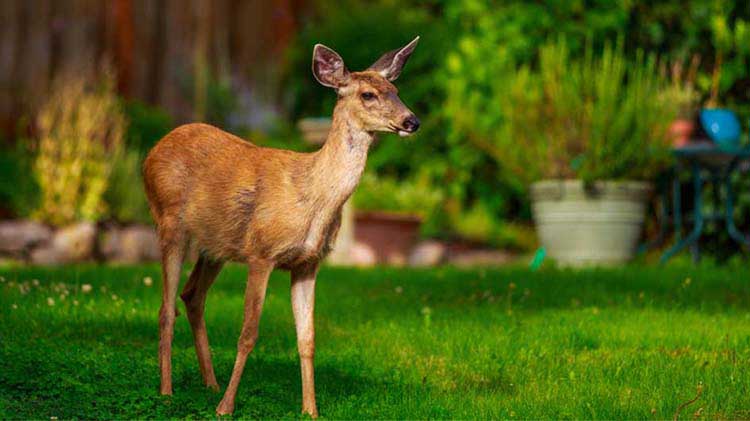How to get rid of nuisance deer
Help keep deer away from your property with these ideas for repellants, noises, barriers and deer resistant plants.
Deer can be one of your lawn's worst enemies. Consider these tips to help prevent nuisance deer from taking over your yard.
Deer repellents
Certain odors and tastes can help deter deer. Use a store-bought deer repellent, hang a bar of soap from a tree limb or try a suggestion below for a homemade deer repellent:
- Spray a 20/80 mixture of egg and water around the yard.
- Utilize a smelly spray or essential oil deer repellent.
Be sure to apply repellents at least 24 hours before expected precipitation. Spray mixtures to heights of at least six feet and reapply every 30 days.
How to scare deer away
Some tactics you may use to frighten nuisance deer include:
- Motion-activated lights
- Noise deterrents like whistles, noisemakers, radios, flags or electric wiring (just be sure to keep your neighbors in mind)
- Scarecrows
- Motion-activated sprinklers
Keep deer from shrubs, flowerbeds and trees
Wrapping shrubs and flowerbeds in netting creates a barrier between the plants and the deer. Placing tubing around tree trunks offers protection, but be sure it's loose enough to allow tree growth.
Deer fencing
Building a fence can help keep nuisance deer at bay. Electric fencing can be cost effective and efficient for deterring deer.
If you're building a fence, you'll want to make sure that it is at least 8 feet high and made of woven wire.
Deer repellent plants
Another way to prevent your yard from becoming the neighborhood buffet is to use plants that deer find unappetizing. Deer are very selective grazers, so once they begin munching on deer deterrent plants, they will move on to the next location.
Before planting, confirm that the plants are a match for your area by referencing the USDA Hardiness Zone Map. You’ll also want to know if plants are poisonous to people or pets.
Here are some suggestions for annuals:
- Floss Flower
- Signet Marigold
- Verbena
- Snapdragon
- Foxglove
- Dusty Miller
- Sunflower
- Forget-me-not
- Foxglove
- Dahlia
Here are some suggestions for perennials:
- Russian Sage
- Bee Balm
- Bleeding Hearts
- Astilbe
- Lamb’s Ear
- Liatris
- Salvia
- Dusty Miller
- Lavender
- Yucca
- Wood Hyacinth
Before taking action, review your local game laws or speak with fish and wildlife officials to verify the action you are considering is legal.




